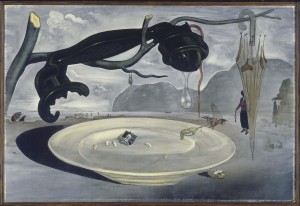Spanish post-war: Art, despite it all
After General Franco’s victory, Spain immersed itself in a period of recovery after the disasters of the Spanish Civil War, a period which also saw the imposition of a strong censorship in the art scene. However, art managed to flourish despite these hard conditions it was subjected to, as you can see in this exhibition. One of its objectives is to make public a period where there is a historical and artistic hole that has received little attention despite its relevance in the artistic discourse of Spain’s modern sensibility.
Under the title of ‘Campo cerrado’ (Field of Honour), a title taken from a critical work by exiled writer Max Aub, the exhibition attempts to show the atmosphere of oppression and despair during the early years of Franco’s dictatorship, from 1939 until 1953.
Eduardo Chillida, Salvador Dalí, Miguel de Molina, Maruja Mallo, Edgar Neville, Ignacio Zuloaga and Jorge Oteiza are a few of the artists included in this journey back in time, key to understand the spirit of those years which refused to let creative desires die.
The exhibition starts at the end of the Spanish Civil War and ends in the 1950s, a time which saw a change in the cycle according to the curators. According to them, it was a period shaped by “fear and silence” although it didn’t end up becoming a “desert” in terms of artistic creativity.
The exhibition includes more than 1,000 items from 200 artists and authors, such as paintings, sculptures, photographs, miniatures and different printed and visual materials like magazines and films. It’s open to the public until September 26th, and it’s a unique opportunity to discover how artists managed to survive as such. It’s divided into eight different sections, each with descriptive titles such as “A new era”, “Countryside and city” or “Exiles”.
Categories: Arte y cultura



Leave a Comment